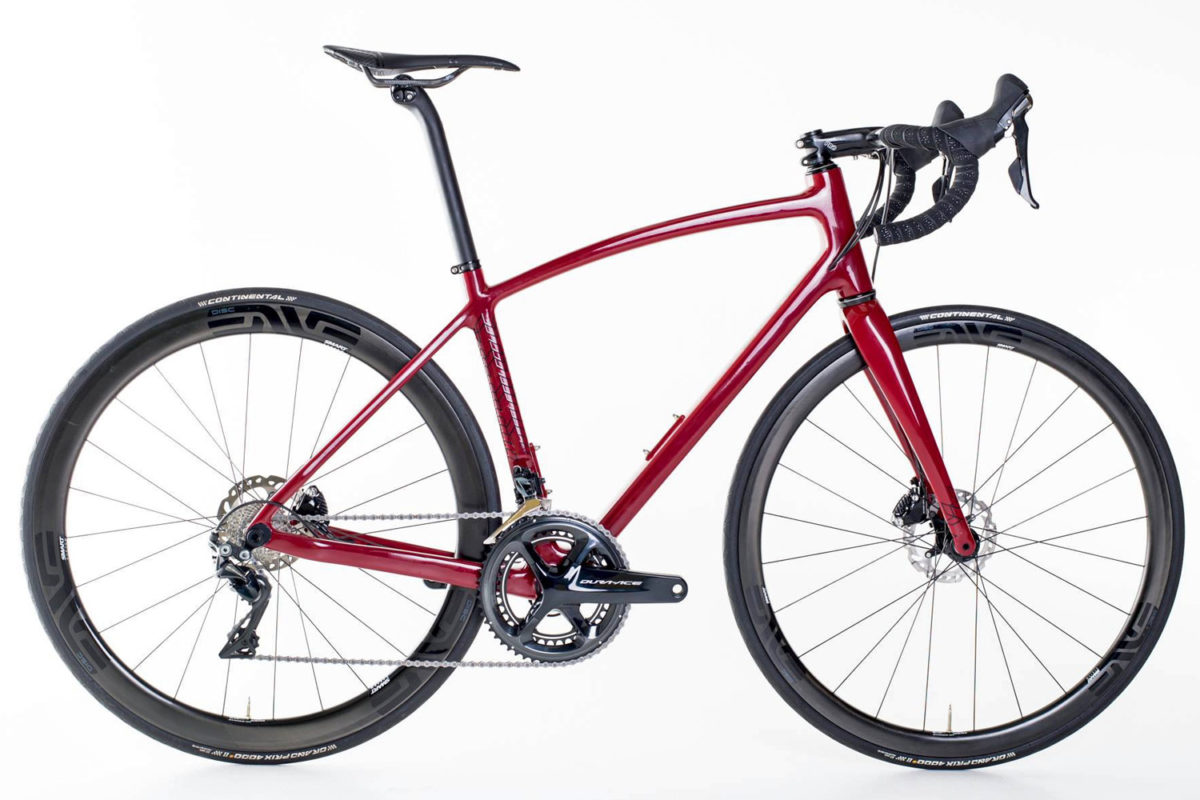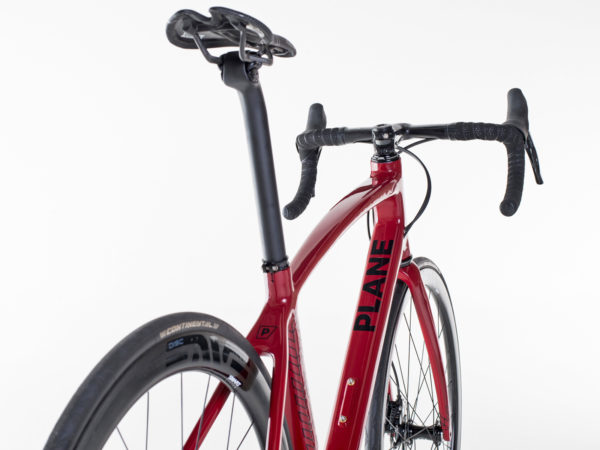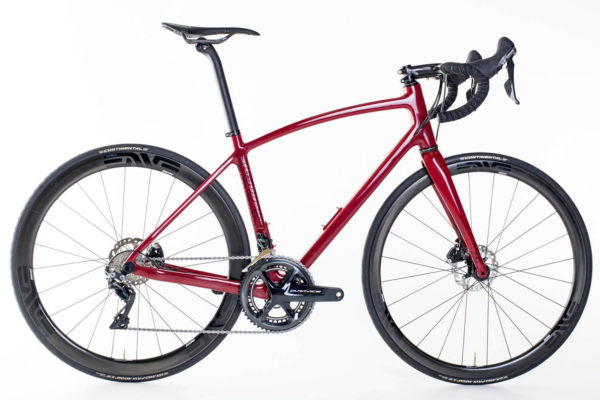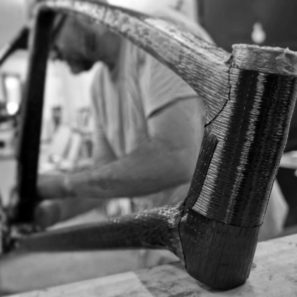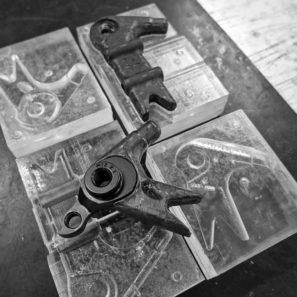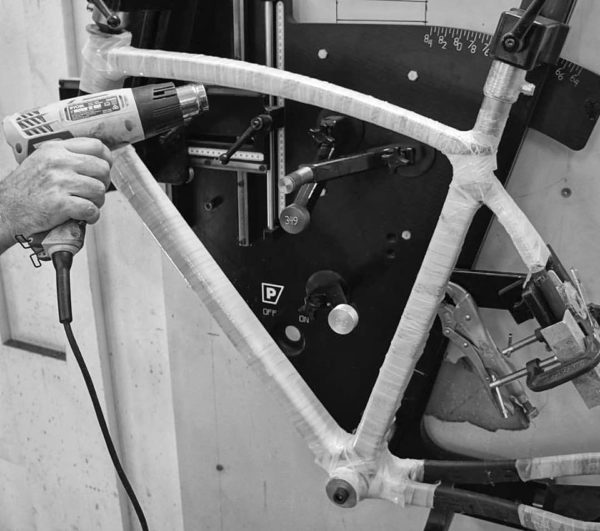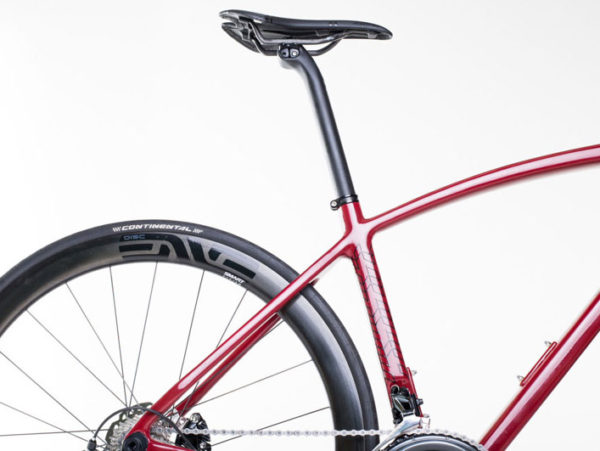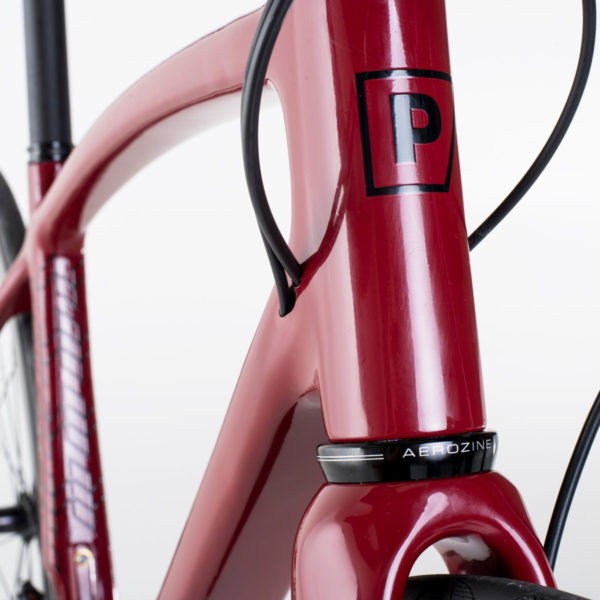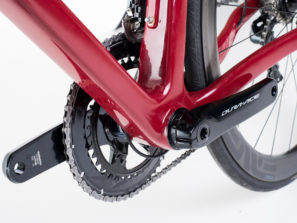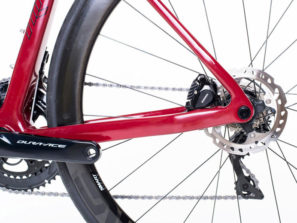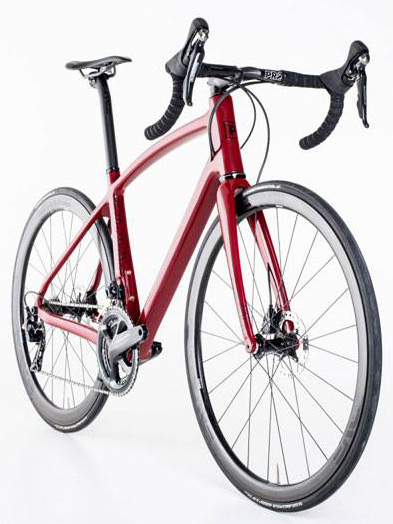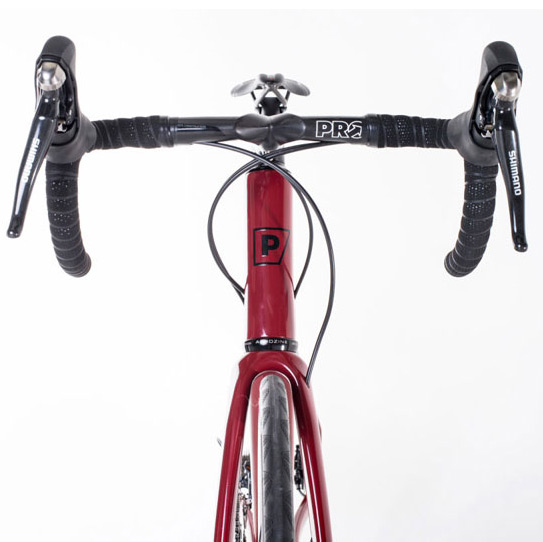Since we heard from Australian custom carbon bike maker Plane Frameworks last winter they’ve apparently made big steps forward in their process. Starting with one-off machined EPS molds for each bike and their own in-house carbon pre-preg, Plane has something of a luxury of being able to fine tune each subsequent bike to continue to evolve the design and to create a bike truly unique to each customer. Their newest disc brake road bike is a good example of the iterative process, now completely incorporating a number of refinements they have been in the works on several different bikes over the last couple of months…
The new bike gets all-new more boxy tubing profiles, plus a new set of flat mount disc brake dropouts that Plane Frameworks has produced completely in house for more space at the rear end.
It’s interesting to note here that Plane doesn’t work with off-the-shelf (out-of-the-refrigerator?) carbon pre-preg sheets like many carbon builders. Instead they feel more in control by starting with a range of raw fiber weaves, and then impregnating them all in-house with the same Kinetix R240 epoxy resin. Working with a more local resin distributor, they can maintain they same 40% resin content across all different moduli of carbon, end up with a resin that cures at the lower temperature tailored to their process, and yields a major improvement in resulting strength & material toughness.
Their bikes are crafted by heat-shrinking a first layer of carbon over the machined EPS mold to set its shape, before completing the total layup on top of the core.
The new Plane Frameworks also gets new chain and seatstay designs, a new seatpost clamp setup, and revised internal routing. Altogether the tube shape changes also led Plane to rework each junction to be less webbed, and to create a wider, stiffer bottom bracket with a dramatically reduced chainstay bridge/shelf.
At first glance the new bike retains the same look of the previous models, but it clearly has made a big step forward in the details.The result, a bike that is at one time stiffer, stronger, and lighter – down under 900g. Plus, Plane Frameworks says that the newly refined design allows them to build their unique one piece monocoque construction even easier into the full custom geometry that their clients are looking for.
